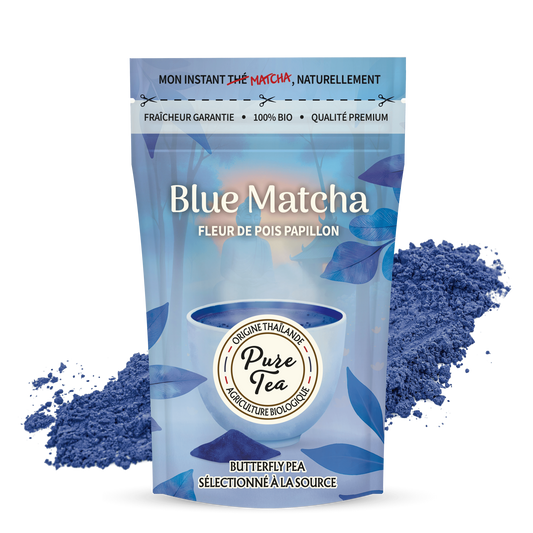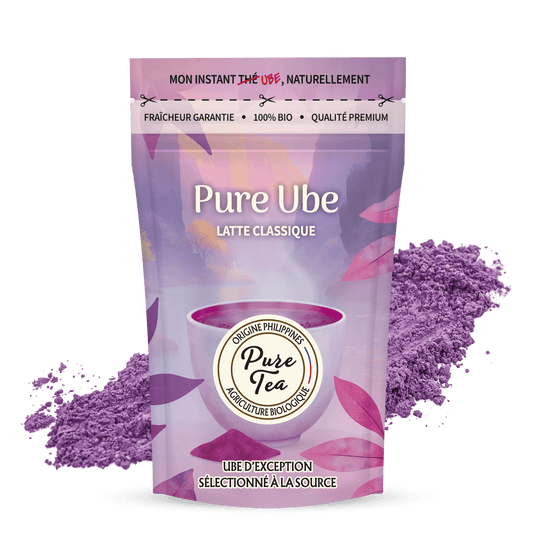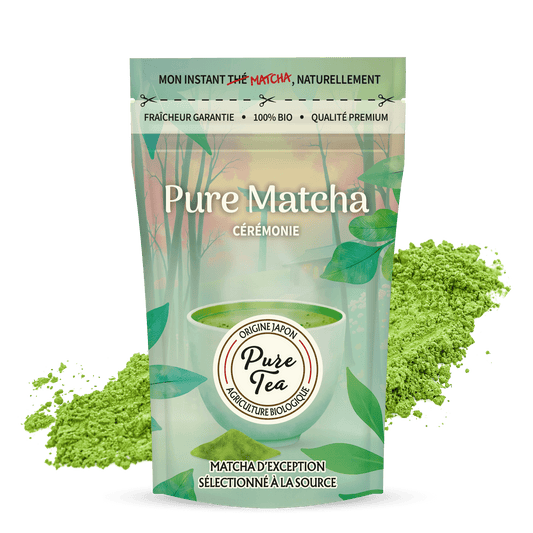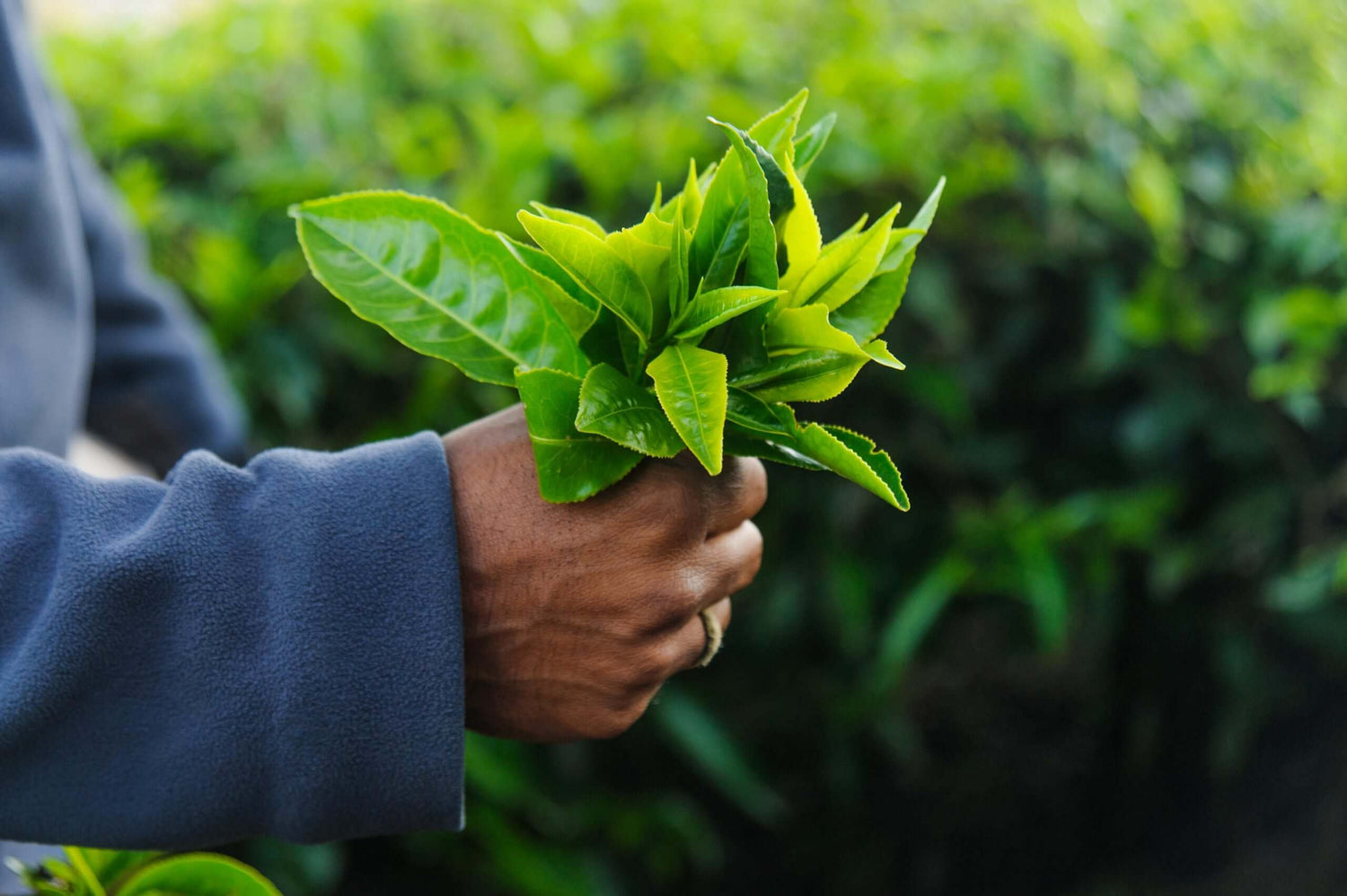Much more than a drink, black tea is a marker of civilization. Originally just a leaf picked from a mountain shrub, over the centuries it has become the beating heart of many cultures—a symbol of refinement, awakening, and social connection. Drinking black tea is sharing a millennia-old heritage; it’s also an invitation to slow down and truly feel. But where does it actually come from? And how did this deep, dark beverage conquer the world?
I. China: Where it all began
The history of tea begins in the misty mountains of Yunnan and Fujian, China. This country, the undisputed birthplace of tea, originally made no clear distinction between green, oolong, or black tea. Everything depended on the timing of the harvest, the wilting method, exposure to air, and drying.
Black tea, known as "hong cha" in China (literally "red tea," referring to the color of the infusion), was a late innovation in Chinese tea history. It was born from an accident. Legend has it that in the 16th century, in the village of Tong Mu, an imperial army interrupted the traditional drying of green tea. To save the harvest, villagers decided to smoke the leaves over pine wood to speed up the process. The result was a tea with strong, woody, almost caramelized aromas: Lapsang Souchong was born. It would later become one of the most prized teas among European aristocracies.
But behind this anecdote lies a broader reality: China, a vast land with varied climates, has always managed to adapt its processing techniques to commercial needs and the tastes of its people. Keemun, produced in Anhui province in the 19th century, is a perfect example of this drive for elegance and complexity: less smoky, more floral, almost chocolatey, it was created specifically to appeal to Western markets and became highly sought after in English blends.
Drinking Chinese black tea is rediscovering a subtle balance between strength and refinement, a trace of fire and mist, a memory of ancient forests and age-old rituals.
II. India: The Tea Empire Forged by Colonization
India didn’t know tea before the arrival of the British. Or at least, it wasn’t cultivated on a large scale. It was the English colonists who, in the 19th century, decided to introduce tea cultivation to reduce their dependence on China, with whom trade relations were becoming strained, especially after the Opium Wars.
In 1823, a British major accidentally discovered a wild tea plant in the forests of Assam, in northeastern India. Very soon, industrial plantations sprang up, maintained by exploited local labor, and Indian tea became a tool of colonial power. But from this complex history emerged a distinctly Indian black tea identity.
Assam tea, robust and full-bodied with an amber liquor, is the base of the famous chai, steeped for a long time with milk, sugar, and spices (cardamom, cinnamon, ginger, etc.). It perfectly embodies India’s ability to reinterpret foreign influences and turn them into powerful, unique cultural elements.
Further north, in the foothills of the Himalayas, another gem emerges: Darjeeling. Grown at high altitude in nearly constant mist, this black tea is actually a hybrid—often semi-oxidized—with muscatel, floral, delicate notes. Each harvest, or "flush," produces a different tea, much like a fine vintage. Darjeeling is so prestigious that it is protected by a controlled designation of origin.
Thus, India became—initially against its will—one of the world’s largest producers of black tea, turning an imperial mandate into a tradition deeply rooted in its social and culinary fabric.
III. Sri Lanka: The Revival of Ceylon
Also a former British colony, Sri Lanka—then called Ceylon—was converted to tea cultivation under surprising circumstances. At the end of the 19th century, a disease devastated the island’s coffee plantations. In just a few years, the entire agricultural economic system collapsed. To survive, the British colonists then bet on tea. It paid off: the mountainous soil, humid climate, and varying altitudes provided ideal conditions.
Ceylon tea develops its distinctive aromatic identity: lively, bright, lemony, sometimes almost minty depending on the region. In Nuwara Eliya, you’ll find fine, floral teas, often hand-picked by Tamil women. In the Uva region, the teas are stronger, with a slight bitterness that makes them perfect for English blends.
But what truly makes Ceylon black tea so unique may be its remarkable ability to withstand the test of time. Not very sensitive to oxidation and easy to brew, it quickly became the standard in European tea rooms and in industrial tea bags throughout the 20th century.
Even today, although other countries have emerged on the tea scene (Kenya, Turkey, Vietnam, etc.), Sri Lanka remains a giant of the orthodox tradition, where every leaf is hand-rolled, sorted, and precisely dried.
IV. Black tea, a bridge between worlds
From Taoist China to colonial India, from the mountains of Sri Lanka to Western dining tables, black tea is a bridge between cultures—a liquid mirror reflecting history, geopolitics, tastes, and identities.
It is both the tea of English aristocracy, the fuel of industrial revolutions, the companion of Russian writers in their snowy dachas, and a spiritual drink in Chinese temples. It’s enjoyed with milk in London, with butter in Tibet, and with lemon in Moscow.
And everywhere, it connects.
V. How to enjoy it today?
Although black tea has stood the test of time, it still deserves to be rediscovered today. To reveal all its richness:
-
Use low-mineral water at 92–95°C
-
Steep the leaves for 3 to 5 minutes depending on the variety.
-
Take the time to taste it pure, before adding milk or sugar
-
Pair it with savory or sweet foods: dark chocolate, aged cheese, buttered toast...
An elixir of memory
Every cup of black tea is a fragment of history. It carries the scents of a Chinese forest, the cries of a colonial port, the rustling of dawn harvests, the silence of a monastery. To realize this is to transform an ordinary gesture into a ritual of remembrance. Drinking black tea is not just about warming up. It’s about opening yourself to the world’s history, through your senses.

















